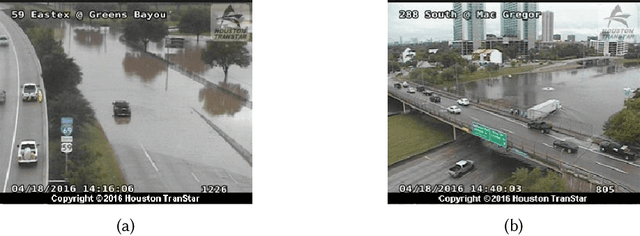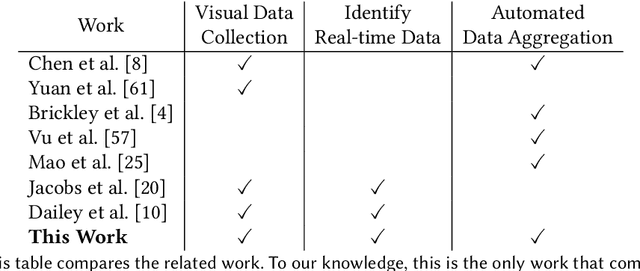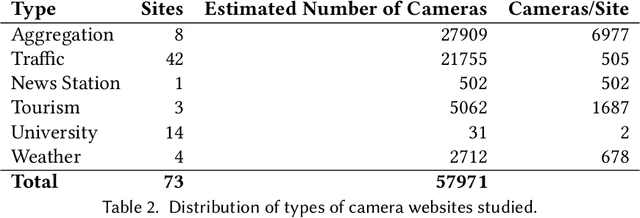Aniesh Chawla
Automated Discovery of Real-Time Network Camera Data From Heterogeneous Web Pages
Mar 23, 2021



Abstract:Reduction in the cost of Network Cameras along with a rise in connectivity enables entities all around the world to deploy vast arrays of camera networks. Network cameras offer real-time visual data that can be used for studying traffic patterns, emergency response, security, and other applications. Although many sources of Network Camera data are available, collecting the data remains difficult due to variations in programming interface and website structures. Previous solutions rely on manually parsing the target website, taking many hours to complete. We create a general and automated solution for aggregating Network Camera data spread across thousands of uniquely structured web pages. We analyze heterogeneous web page structures and identify common characteristics among 73 sample Network Camera websites (each website has multiple web pages). These characteristics are then used to build an automated camera discovery module that crawls and aggregates Network Camera data. Our system successfully extracts 57,364 Network Cameras from 237,257 unique web pages.
Cross-referencing Social Media and Public Surveillance Camera Data for Disaster Response
Jan 19, 2019



Abstract:Physical media (like surveillance cameras) and social media (like Instagram and Twitter) may both be useful in attaining on-the-ground information during an emergency or disaster situation. However, the intersection and reliability of both surveillance cameras and social media during a natural disaster are not fully understood. To address this gap, we tested whether social media is of utility when physical surveillance cameras went off-line during Hurricane Irma in 2017. Specifically, we collected and compared geo-tagged Instagram and Twitter posts in the state of Florida during times and in areas where public surveillance cameras went off-line. We report social media content and frequency and content to determine the utility for emergency managers or first responders during a natural disaster.
 Add to Chrome
Add to Chrome Add to Firefox
Add to Firefox Add to Edge
Add to Edge